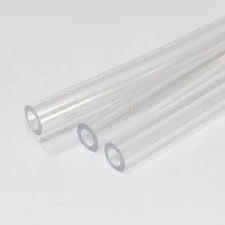Aug . 21, 2024 07:08 Back to list
Guide to Choosing PVC Irrigation Pipe Fittings for Optimal Water Flow Systems
The Importance of PVC Irrigation Pipe Fittings in Modern Agriculture
Irrigation is a cornerstone of effective agricultural practices, ensuring consistent water supply to crops, particularly in regions with inadequate rainfall. Among the various components that facilitate efficient irrigation systems, PVC (Polyvinyl Chloride) pipe fittings play a vital role. These fittings, known for their durability, affordability, and ease of installation, have become increasingly popular in both large-scale agricultural operations and small-scale gardening.
Understanding PVC Pipe Fittings
PVC pipe fittings are components used to connect various sections of irrigation tubing, enabling the distribution of water from the source to the plants. They come in various shapes and sizes, including elbows, tees, couplings, and reducers. Each type serves a specific purpose in the irrigation system, allowing for changes in direction, splitting of water flow, or connecting pipes of different diameters.
Advantages of PVC Irrigation Pipe Fittings
One of the most significant advantages of PVC pipe fittings is their resistance to corrosive elements found in soil and water. Unlike metal fittings, which can rust or corrode over time, PVC is chemically stable, ensuring long-term functionality. This property not only extends the lifespan of the irrigation system but also reduces maintenance costs associated with frequent replacements.
Additionally, PVC fittings are lightweight, making them easy to transport and install. Farmers and gardeners can set up their irrigation systems without needing heavy machinery or specialized tools, facilitating quicker installations and repairs. This accessibility is especially beneficial for smallholder farmers who may not have extensive resources.
Cost-effectiveness is another key feature of PVC fittings. They are generally less expensive than alternative materials such as metal or polyethylene, making them an attractive option for budget-conscious farmers. Furthermore, the lower installation costs associated with the ease of use and lightweight nature of PVC contribute to overall savings.
pvc irrigation pipe fittings

Environmental Considerations
With the growing emphasis on sustainable agriculture, PVC pipe fittings also hold environmental advantages. The longevity and durability of PVC means that fewer resources are spent on replacement products over time. Additionally, the production of PVC has become more environmentally friendly, with manufacturers adopting green practices to minimize waste and reduce toxins.
Moreover, PVC is a recyclable material. Many manufacturers offer recycling programs for used fittings, which can be reprocessed into new products. This capability contributes to reducing landfill waste and supports a circular economy in agriculture.
Applications in Modern Irrigation Systems
PVC pipe fittings are integral to various irrigation systems, including drip irrigation, sprinkler systems, and surface irrigation. In drip irrigation, for instance, precise fittings are used to ensure water reaches the plant roots efficiently, conserving water and improving crop yields. In sprinkler systems, various PVC fittings allow for adjustable angles and distances, ensuring even water distribution across large fields.
As precision agriculture continues to evolve, the demand for adaptable and robust irrigation solutions grows. PVC pipe fittings support modern technology integration, such as automated irrigation systems and sensors that optimize water usage based on soil moisture levels.
Conclusion
In conclusion, PVC irrigation pipe fittings are essential components that significantly enhance the efficiency and effectiveness of irrigation systems in modern agriculture. Their durability, cost-effectiveness, and ease of use make them an ideal choice for farmers and gardeners alike. As the agricultural sector continues to innovate, embracing sustainable practices and advanced technologies, PVC fittings are likely to remain a crucial element in the quest for improved water management and crop productivity. Emphasizing their importance can help promote smarter water use, ultimately contributing to food security and agricultural sustainability.
-
HDPE Pipe Fittings: Durable, Leak-Proof Solutions
NewsAug.16,2025
-
Premium CPVC Sheet: High-Temp & Chemical Resistant Solutions
NewsAug.15,2025
-
Durable PPR Pipe for Hot & Cold Water Systems - Easy Install
NewsAug.14,2025
-
Durable HDPE Sheet | Versatile & Impact-Resistant Plastic
NewsAug.13,2025
-
Premium PVC Soft Sheets: Clear, Flexible & Durable
NewsAug.12,2025
-
Premium PVC Round Rods: Durable, Chemical Resistant, Easy to Machine
NewsAug.11,2025

